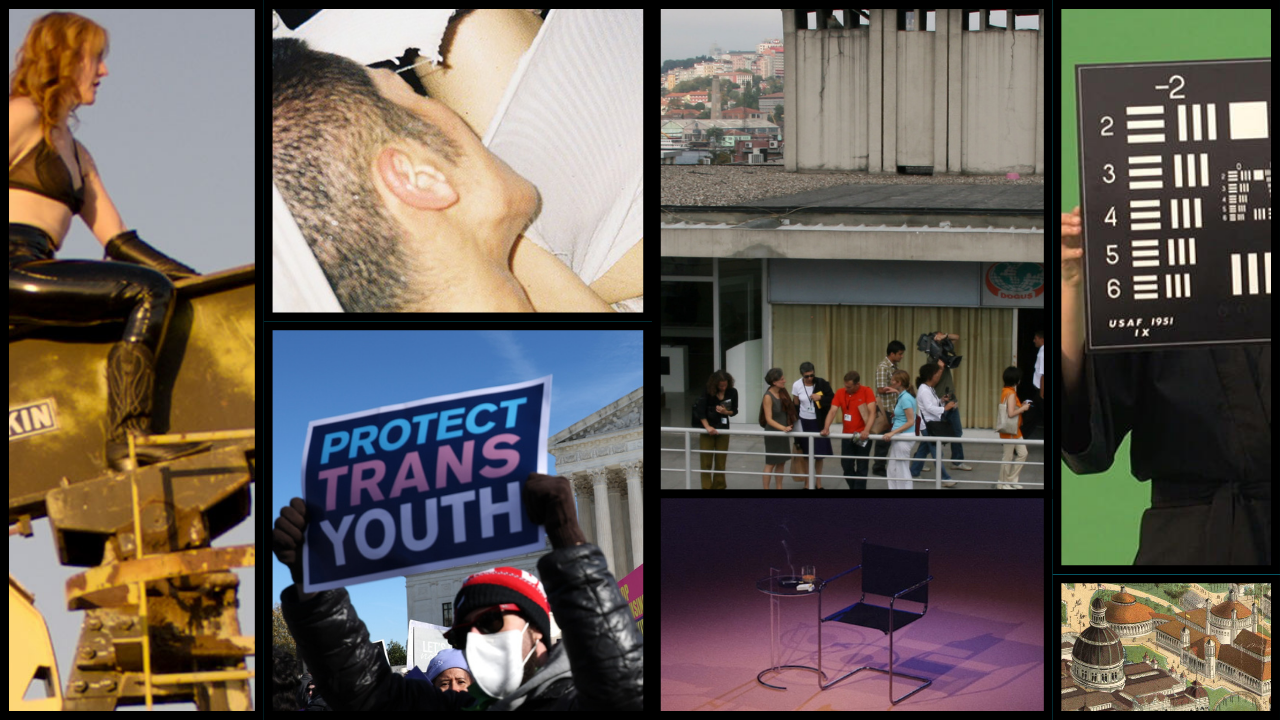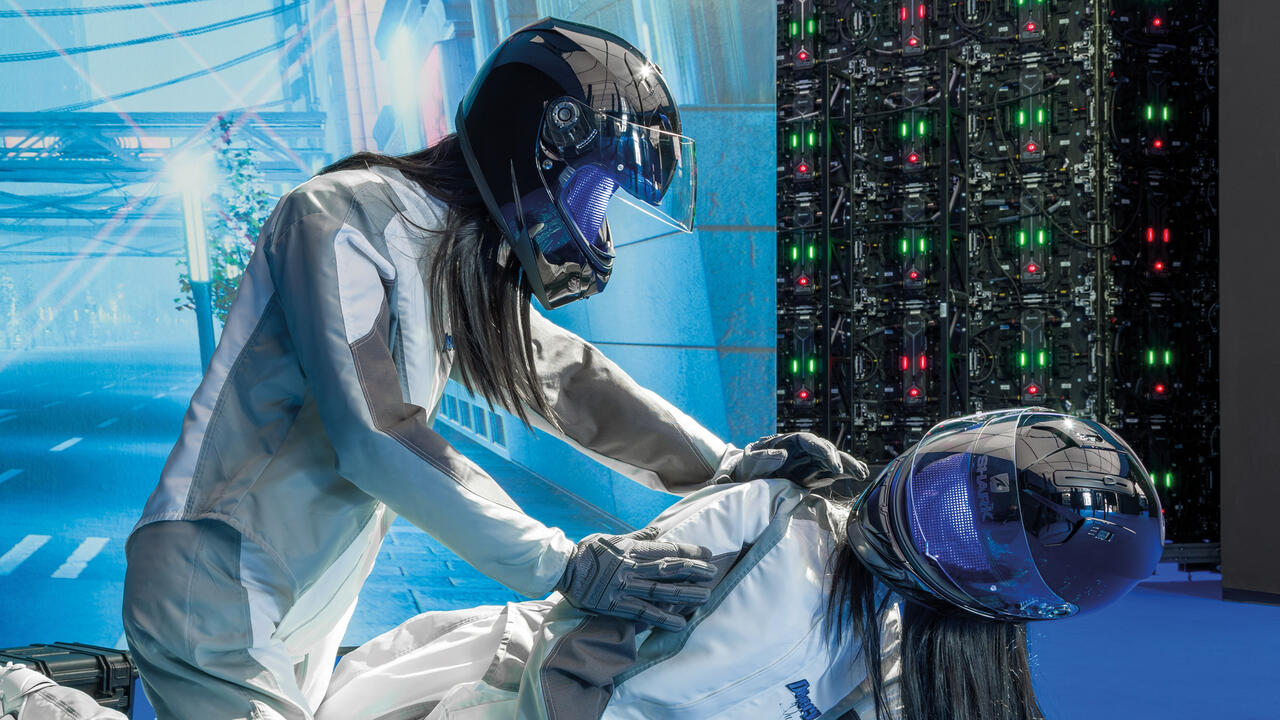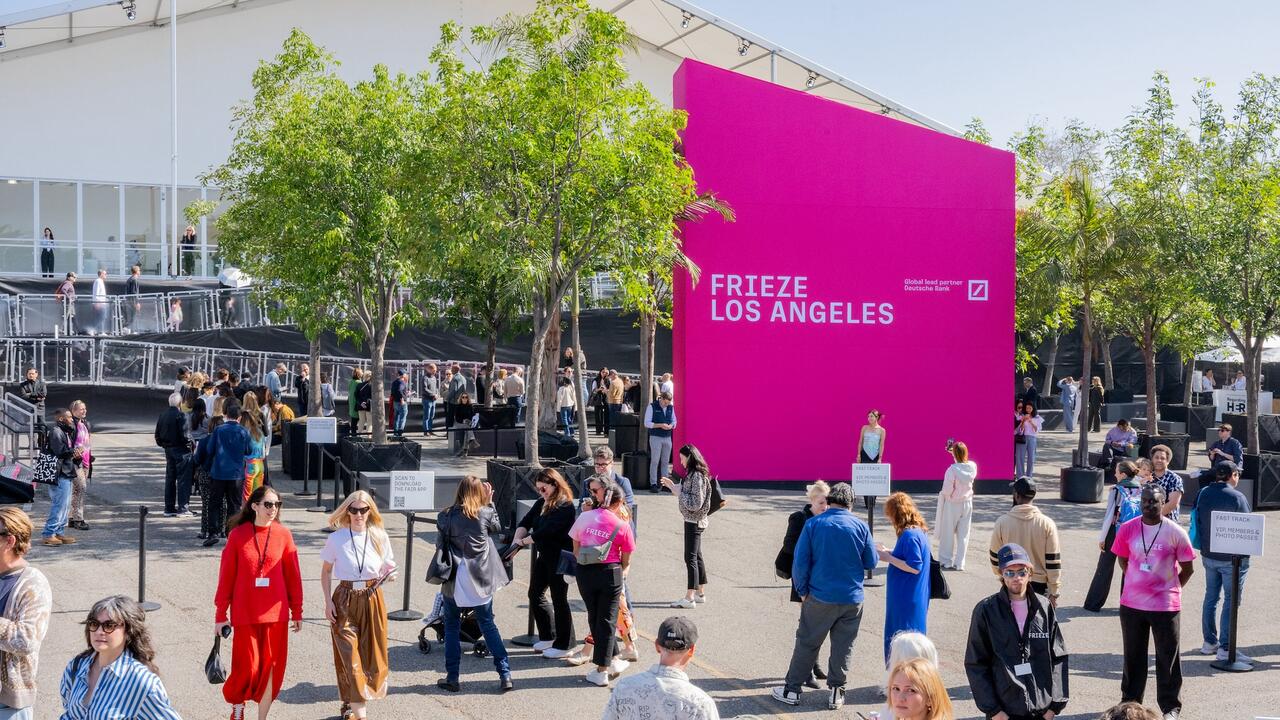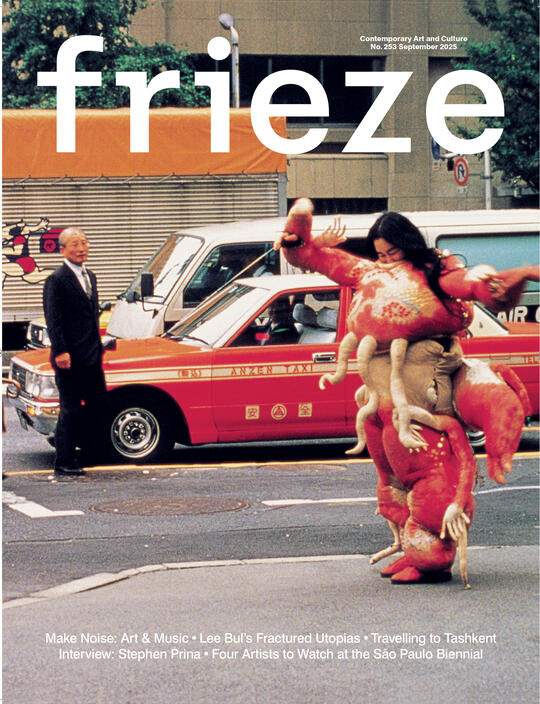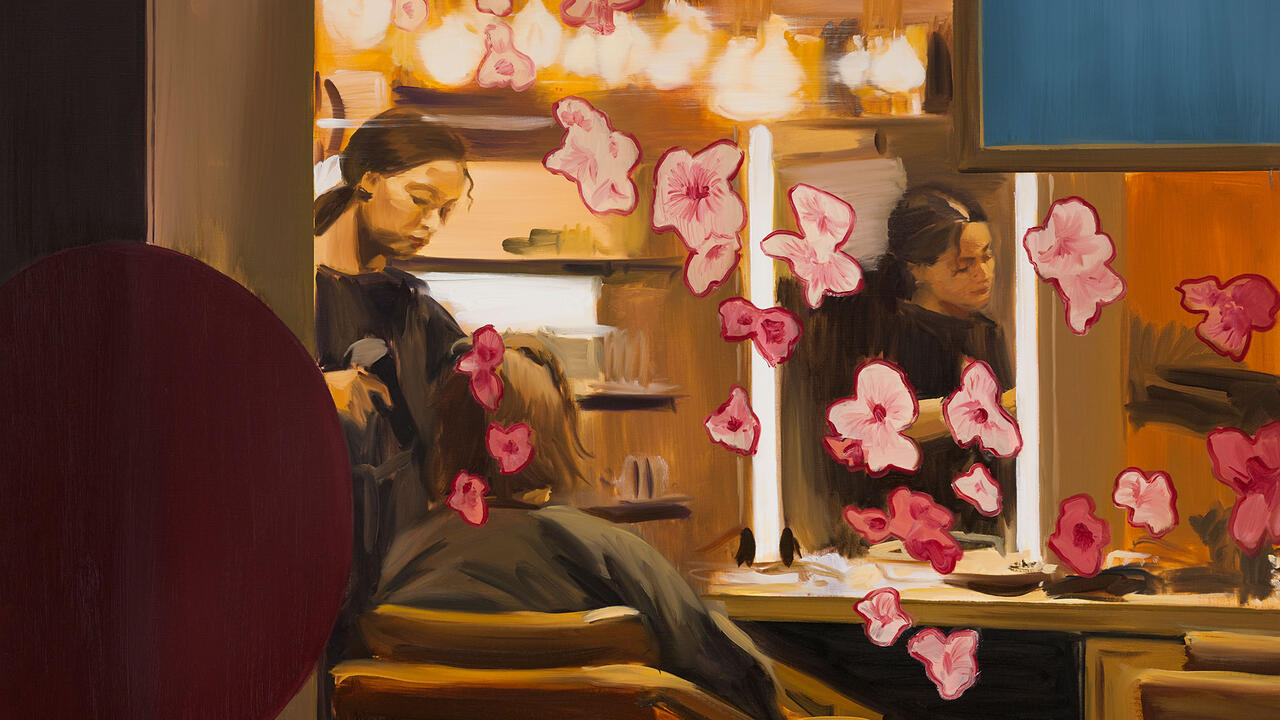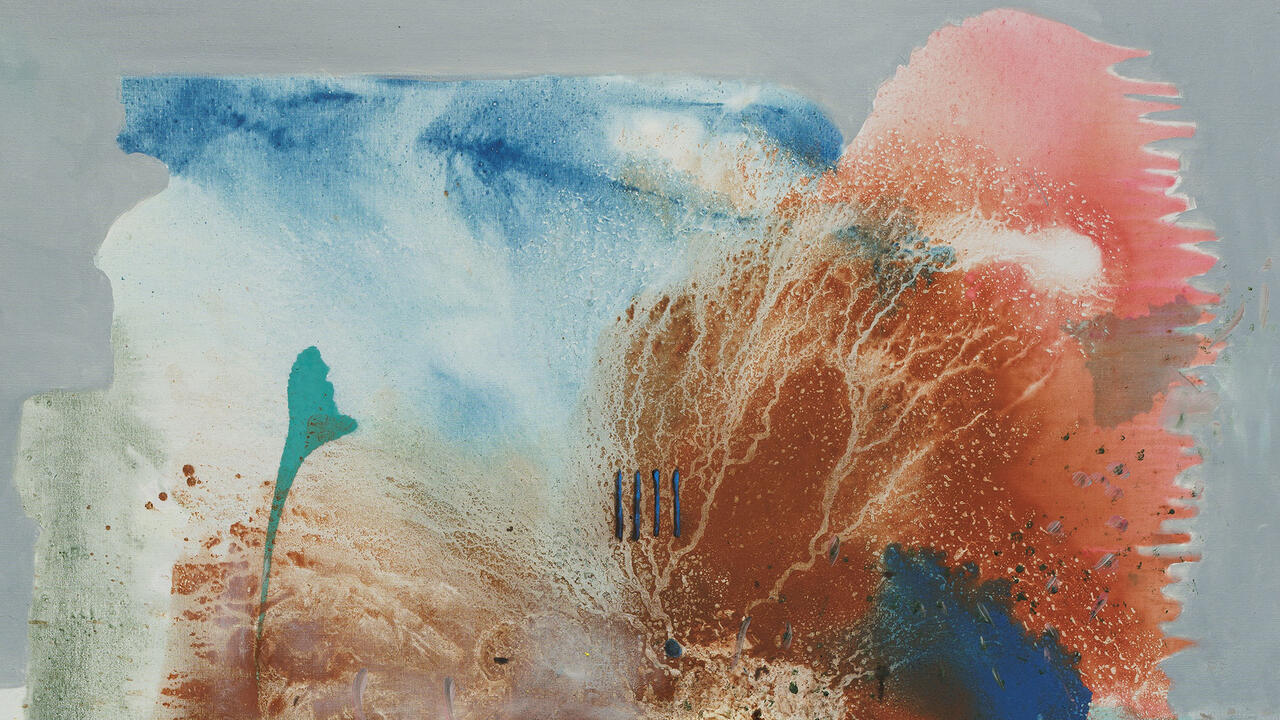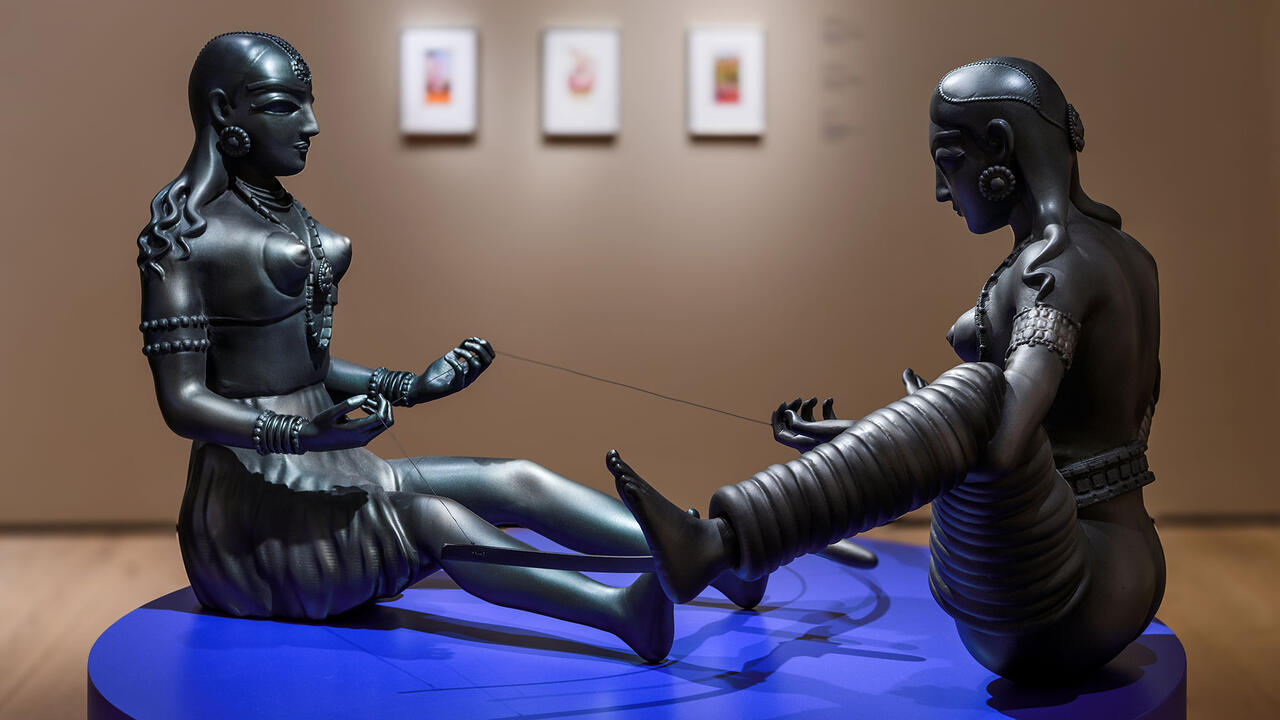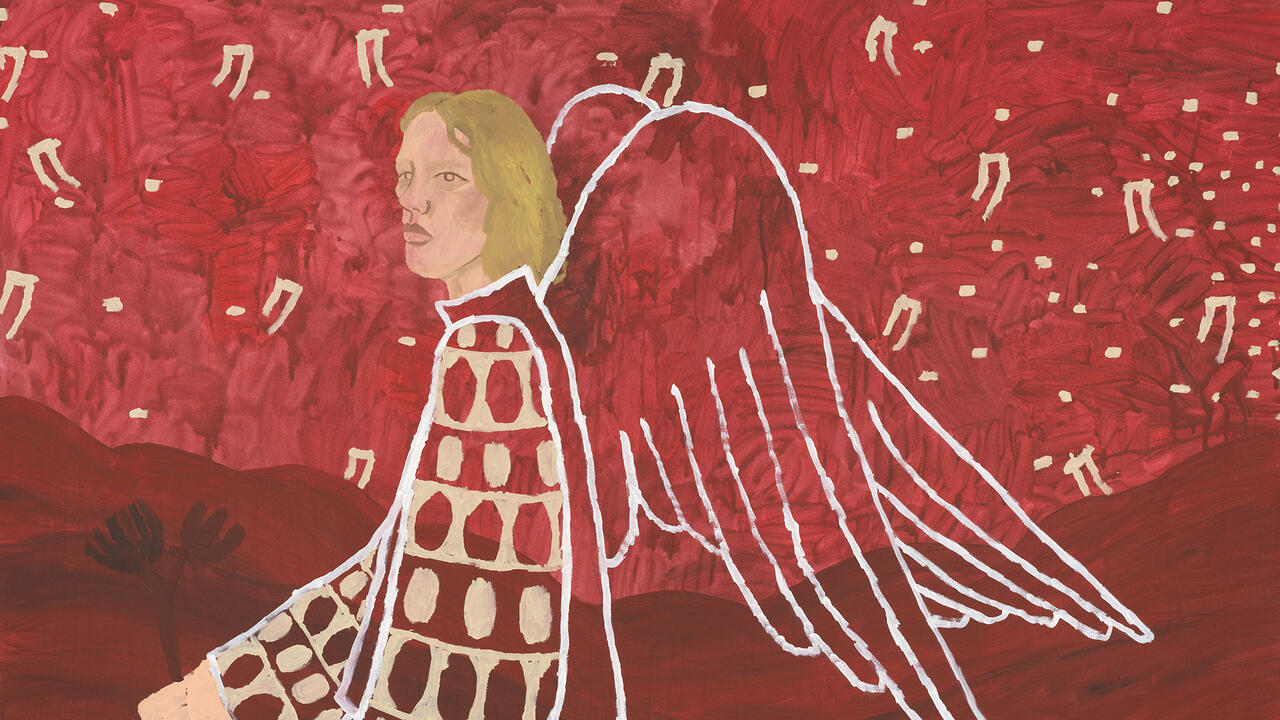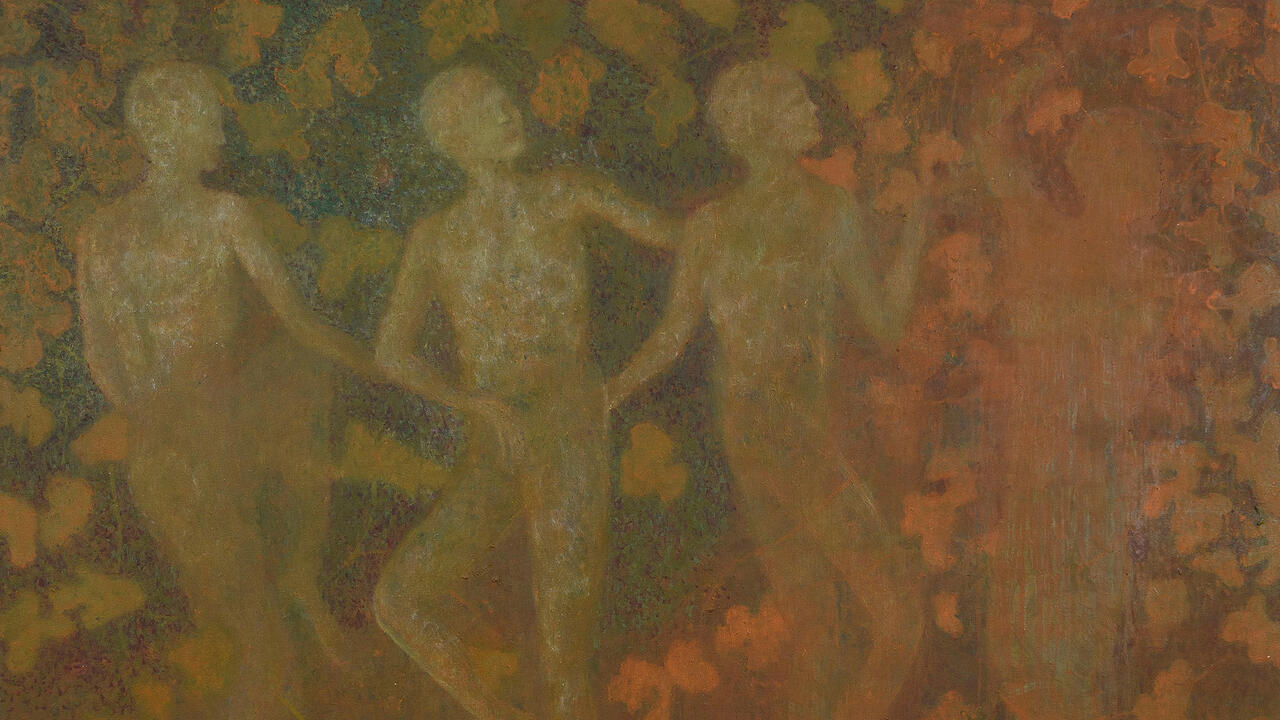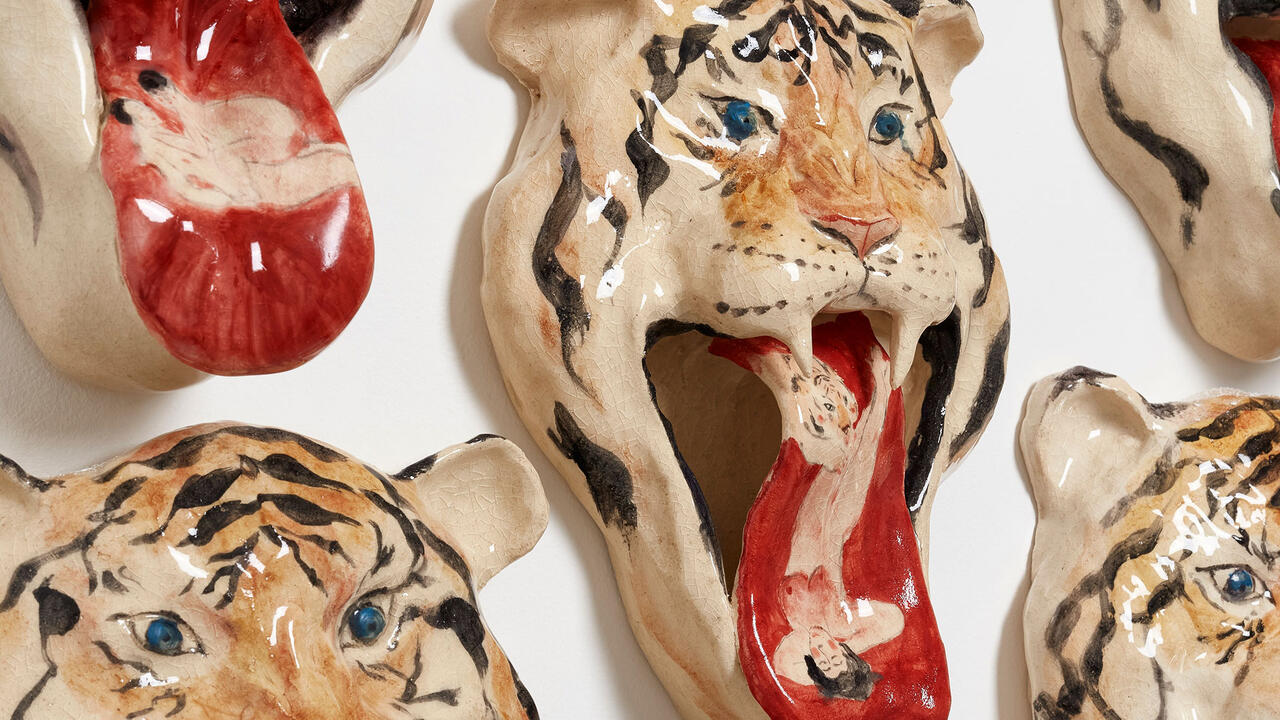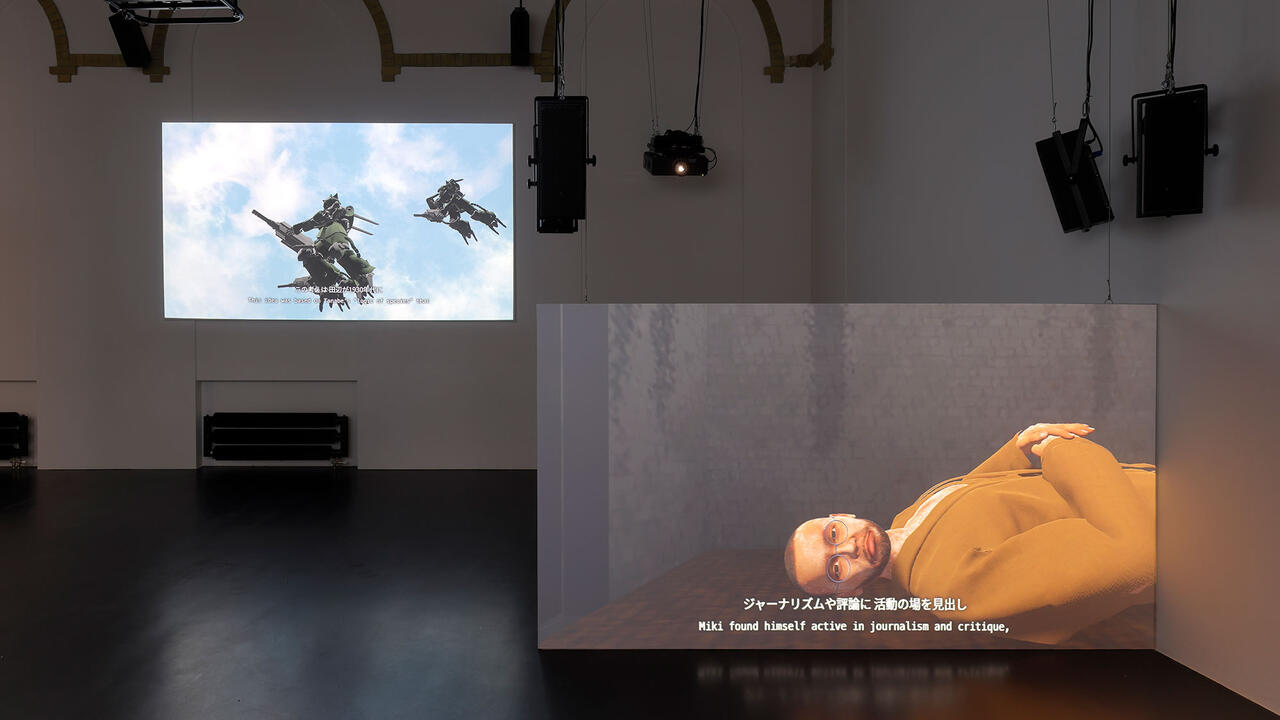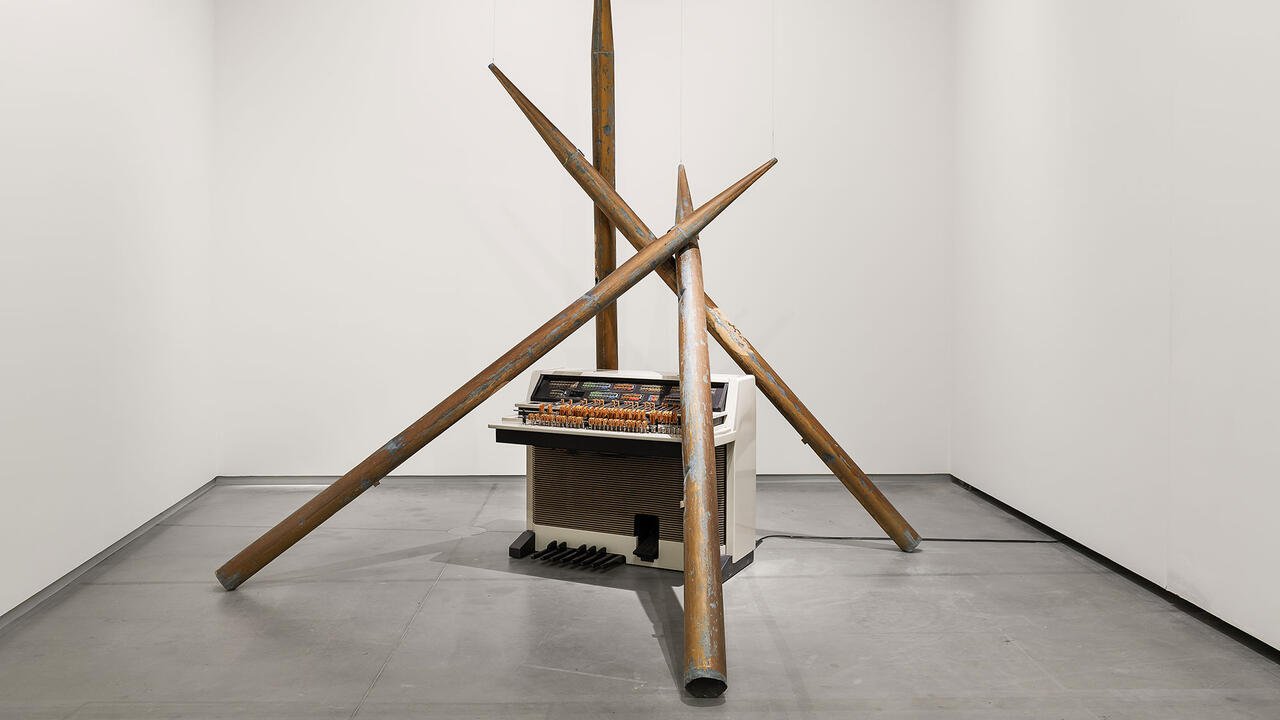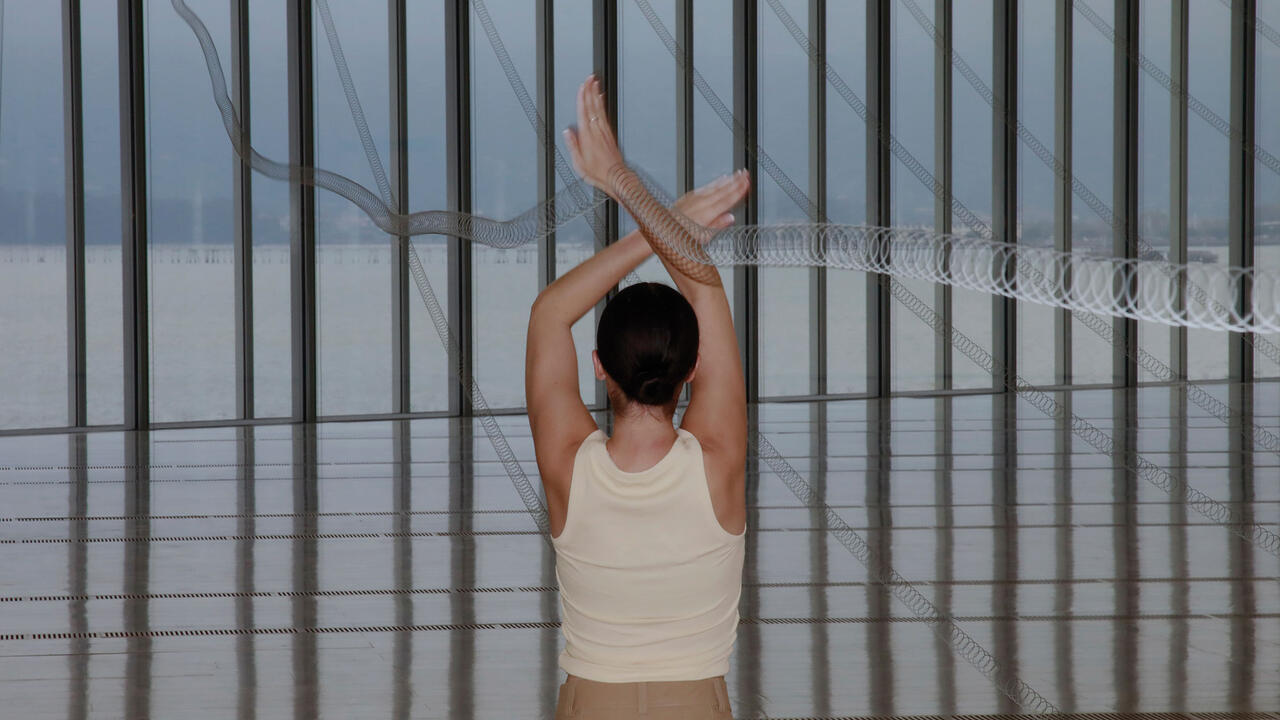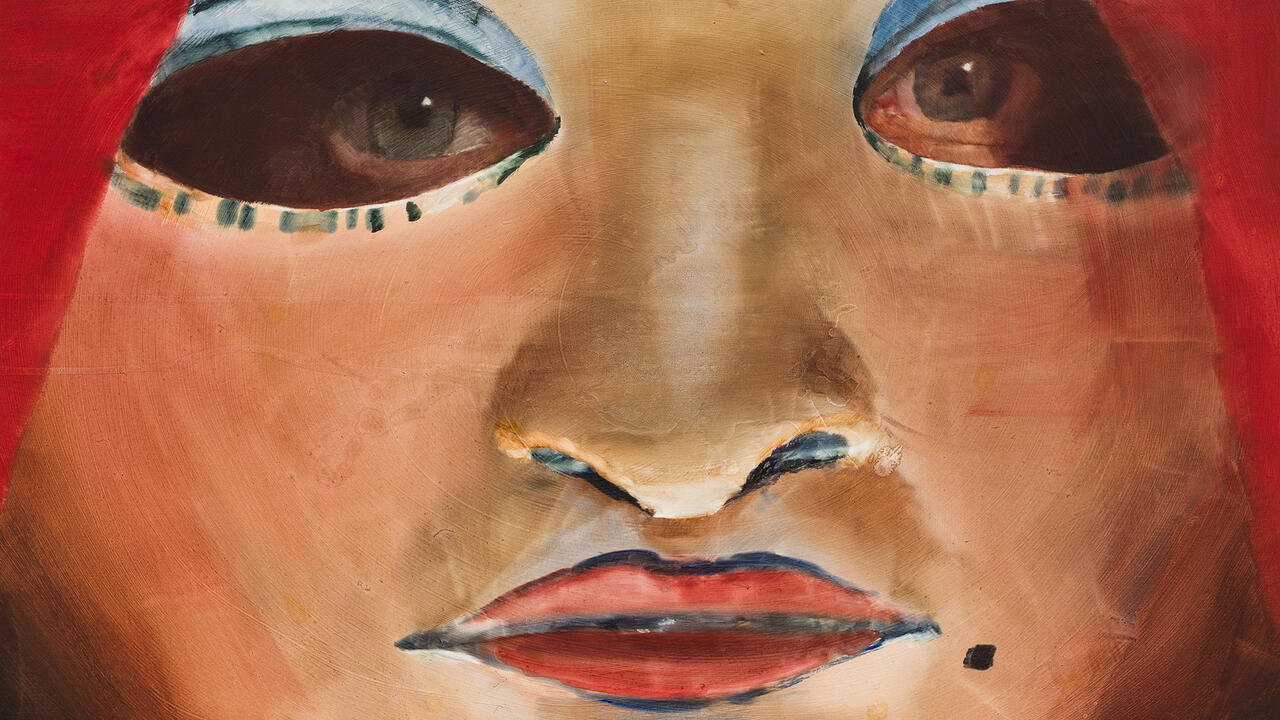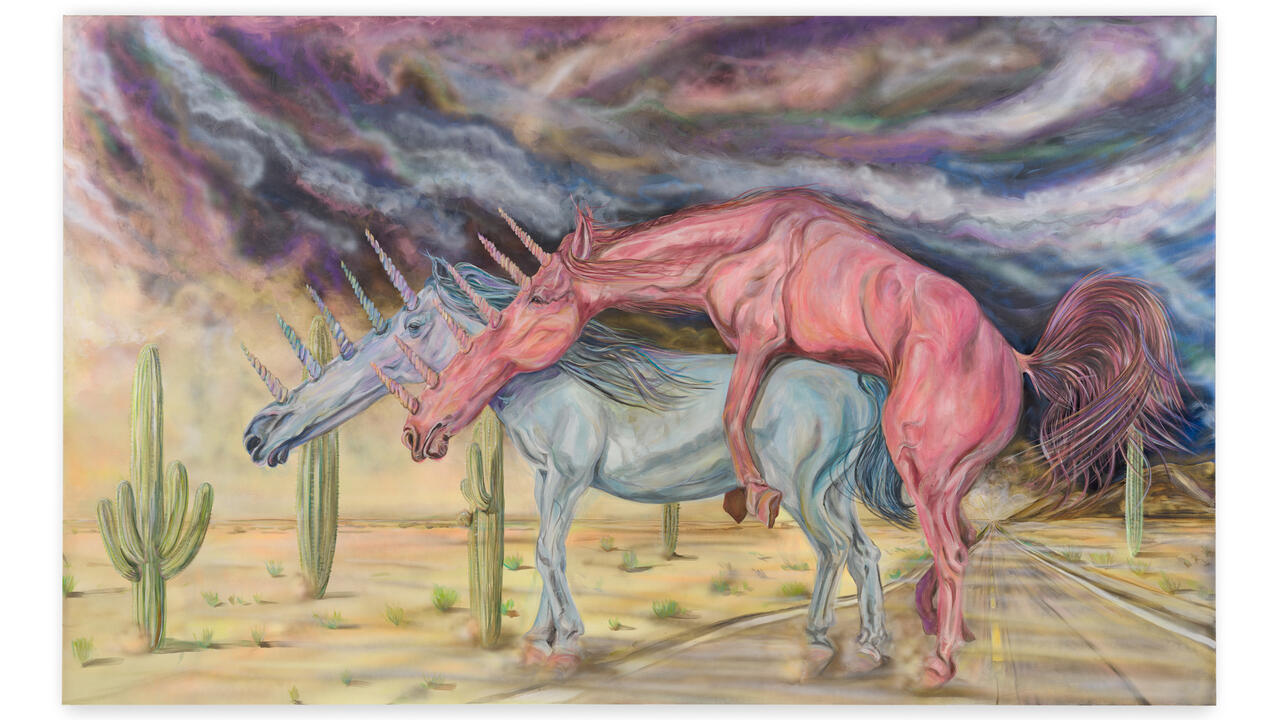Eva Helene Pade Reframes Sacrifice as Resistance
At ARKEN Museum of Contemporary Art, Ishøj, the artist’s visceral canvases recast the relationship between femininity and violence
At ARKEN Museum of Contemporary Art, Ishøj, the artist’s visceral canvases recast the relationship between femininity and violence

Aged just 27, Danish-born artist Eva Helene Pade has already developed an assured painterly language that feels distinctly her own. Her debut institutional solo show, ‘Forårsofret’ (The Rite of Spring) at ARKEN Museum of Modern Art in Ishøj, does not arrive quietly. With natural light entirely blocked from the gallery, the room is saturated with the colour and visceral energy of Pade’s latest paintings: ten large-scale, freestanding canvases staged diagonally across the room and tiered like theatrical vignettes, guiding viewers along a narrative path. Despite taking its title from Igor Stravinsky’s 1913 ballet, Pade’s exhibition is far from a literal homage. Instead, she composes something more urgent: a painterly reckoning with sacrifice and femininity, challenging traditional portrayals of women as passive victims.

When Stravinsky’s ballet premiered at the Théâtre des Champs-Élysées in Paris, audience members were incited almost to riot, shocked by the composer’s raw and propulsive musical score accompanied by Vaslav Nijinsky’s angular and grounded choreography. More than a century later, Pade revisits the ballet’s narrative, in which a sacrificial virgin must dance herself to death to ensure the return of spring. By interrogating this plotline, the artist asks us to consider why such a sacrifice is necessary and who should decide the protagonist’s fate.
‘Forårsofret’ opens with Adoration of the Earth (2025), a diptych of two nude figures reclining in beds of sunflowers. At first glance, these scenes appear serene: the women’s faces are calm, almost indifferent. A closer look, however, reveals petals with razor-sharp edges, tense torsos and a storm brewing in the background. Pade’s palette is a bruised blend of acid greens, dark cobalt and rusty yellows: here and throughout her work, beauty is entangled with violence. In The Game of Abduction (2024), female figures stand fully nude and streaked with crimson, their features blurred with movement. Whilst the violence of sacrifice is still present, the women are far from submissive. Striking confident poses with hands raised above their heads, they exude agency. Their interactions carry a sapphic undertone, in a subtle subversion of the heteronormative themes typically found in the ballet’s narrative.

In Tribute to the Chosen One (2024), the next diptych we encounter in this theatrical installation, Pade offers a portrayal of both sisterhood and condemnation. Whilst Nijinsky had initially choreographed stoic elders to determine the virgin’s fate, in Pade’s version female military figures stand nude in a uniform line, their hands stained red and placed ceremoniously over their hearts. The backdrop recedes into darkness, leaving only their faces and upper bodies illuminated by a stark spotlight, elevating them as an empowering collective that carries a sense of judgment and complicity. The ambiguity of their role – whether protectors or executioners – deepens this tension. Pade draws inspiration from Pina Bausch’s 1975 radical reimagining of The Rite of Spring, for which she covered the stage in soil, literally grounding the dancers, and fragmented the identity and autonomy of the virgin, who becomes increasingly broken by physical exhaustion.

By contrast, Pade’s protagonist is not a lone figure: she is dispersed across the exhibition – in different bodies, roles, times – to emphasize the universality of sacrifice present within the female condition. In The Game of Abduction, a woman crouches in smoke, her spine tense with resistance; in The Rite of Spring (2024–25), a newborn emerges in a smear of crimson: these are works in which birth and death blur and the sacrificial act becomes cyclical. The Rite of Spring is the last painting in the show – a six by three metre canvas depicting a storm of limbs, engulfed by fire and colour, on the edge of abstraction. Yet, even in the chaos, we find intimacy, as a protective hand embraces another figure’s shoulder. Pade’s brilliance lies in this balance: of brutality met with tenderness, of dissolution offset by connection.
Eva Helene Pade’s ‘Forårsofret’ (The Rite of Spring) is on view at ARKEN Museum of Modern Art, Ishøj, until 31 August
Main image: Eva Helene Pade, ‘Forårsofret’, 2025, installation view. Courtesy: the artist and ARKEN Museum of Contemporary Art; photograph: Anders Sune Berg


